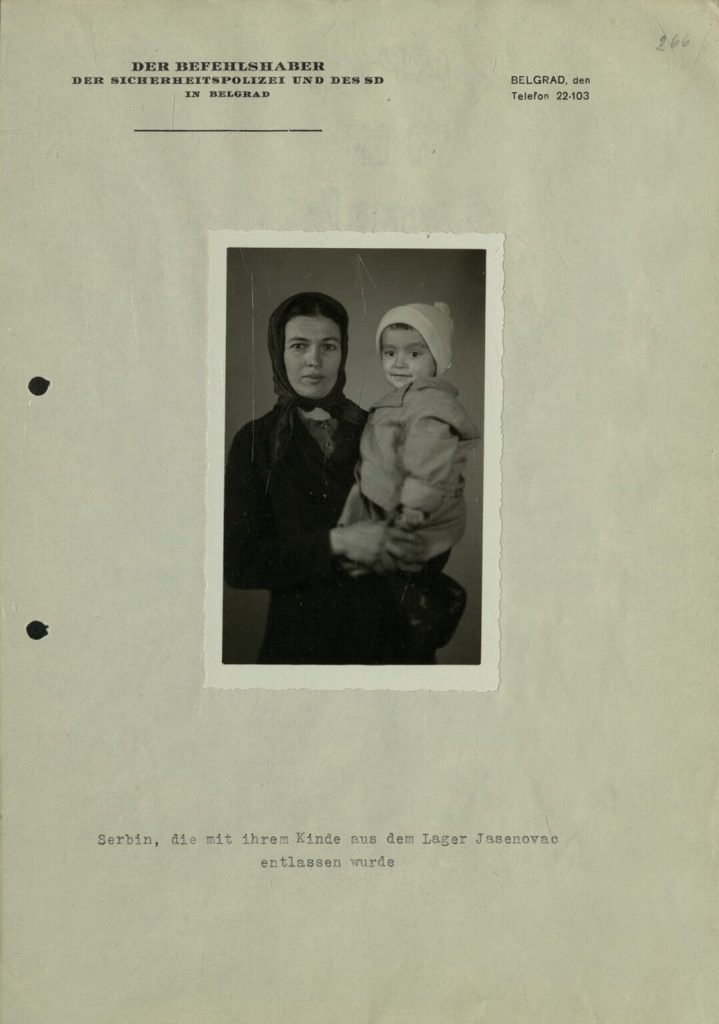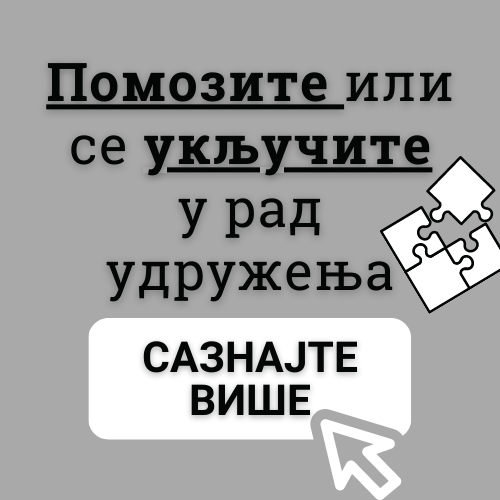In 2020, the Archives of Vojvodina published a very valuable book entitled „Ustasha Atrocities: Collection of Documents (1941-1942)“.
165 selected documents and 63 photographs are published in this collection, together with comprehensive and useful introductory texts and explanations. The editor of the collection is our distinguished historian Dr. Milan Koljanin. The documents published in the collection are part of the files of the German occupying Commander of the Security Police and the Security Service in Belgrade. The file is part of the Archives of Vojvodina F.562, Personal Fund of Slavko Odić (1915–2006), 1909–1983, in which part of the legacy of this bearer of the Partisan Monument in 1941, intelligence officer, diplomat and publicist is kept.
The file itself mainly consists of documents in the German language, created during 1941 and 1942, and collected with the obvious aim of documenting, probably for intelligence purposes, Ustasha crimes committed against Serbs in the territory of the Independent State of Croatia.
The publication of these documents is of enormous importance. Namely, the documents represent the independent and objective testimony of the occupation authorities about crimes in which they were not directly involved, and most of the documents had not been published before. In this sense, the publication of Ustaša atrocities represents an immeasurable contribution to opposing current attempts to revise history, which are particularly noticeable in the region in relation to Ustaša crimes.
This year, the Archive of Vojvodina is launching a project whose goal is to translate the collection of Ustasha atrocities into English, Russian and Hebrew.
The value of this project is twofold – both scientific and national. Scientific, in the sense that there is a need to encourage research into Ustasha crimes by foreign researchers as well, who, for sure, do not often have at their disposal such valuable, original and previously unpublished material. National, because it is in the state and national interest to talk and write about Ustasha crimes outside the borders of the former Yugoslavia, especially in modern times, when the denial of crimes is gaining momentum, and which is easier to overcome, especially when it comes to the crimes of the Ustasha regime against the Serbs, which in their monstrosity stand on the same level as the Nazis. Therefore, it is particularly important that the Archive of Vojvodina intends to translate the collection, in addition to English, the language of the international community, into Russian and Hebrew,
We believe that the realization of this project has multiple meanings in the scientific, professional, cultural, but above all in the most valuable – philosophical sense. In the sense of Aristotelian correspondence – where our claims are in agreement with real events and where truth is seen as the disclosure of hiddenness, that is, as aletheia (non-hiddenness). And the task of every free-minded person is to fight for such and such a Truth.
Nebojša Kuzmanović, director of the Archives of Vojvodina

One refugee states:
Until May 30, 1941, when the Italian army was in Trebinje, complete peace reigned in this place and its sections. No harm was done to the Serbs.
On May 30, 1941, the administration in Trebinje was taken over by the Croatian army. Next day, the Ustashas arrested the former police chief of Boško, Miljković Steve, a police officer, and Nikola Bulić, the warden of the county prison.
On June 1, 1941, the Ustashas went from house to house and arrested all the Serbs. The following were killed: Gaša Kovačević, he was killed in front of his seven children, then Brković Milan, a municipal official, and he was killed in front of his five minor children, Vaso Babić, merchant, Nagulić Dušan, merchant, Vlajko Palikuća, shoemaker, Đurić Šćepan. , butcher’s assistant, Radovan Lečić, cooper, Vlado Popović and Ilija Kukurić. These unfortunates were almost all killed in their homes. Among the many Serbs who were arrested, there was Davidović Bogdan, the president of the District Court, Bokić Rajko, a professor. All the arrested Serbs had to do the roughest work on the roads.
On June 23, 1941, 16 Serbs were taken from the prison and taken in the direction of the village of Pridvorci, where they were beaten at the crossroads. Their corpses were thrown into a cave. Then the following fell as victims: former police chief Boško, Miljković Stevo, police officer, Babić Trifko, railway clerk, Lazar Kukurić, innkeeper, Pidžula Božo, innkeeper and his only son Milorad, 19 years old, Aleksa Sokolović, pensioner, Ćurić Blagoje, innkeeper, Ćurić Đorđe, laborer, Madžar Jovo, innkeeper and Stijačić Obren, farmer.
At the last moment, Škoro Jefta, a postal clerk, Jovi Vlačić, a railway clerk, and Vasa Popovčević, a farmer, managed to escape. They went to Montenegro, after which they came back to Trebinje in September, because the Italian authorities took over the administration.
On July 2, 1941, the arrested Serbs in Trebinje were released again only to be arrested again afterwards.
During the month of July, three transports were taken to the concentration camp in Gospić.
In the first and second transport were: Čučković Filip, landowner and merchant, Komad Ubavko, saddler, Čučković Milan, high school student, Jeremić Mića, mason, Govedarica Vaso, shoemaker, Tarana Savo, tailor, Dimitrije Vuković, shoemaker, Kovačević Vlada, school inspector, Stijačić Mara, innkeeper, Simović Persa, housewife, Kovačević Bosiljka, housewife, Tupanjanin Anđa, midwife, Vujin Krsta, housewife and her sister Zora with one six-year-old child, Osmokrović Bosiljka, clerk in the District Court and many other Serbs and Serbian women . Their fate is unknown to me.
The third transport was going to Čapljina.
Of the 27 Serbs who were in this transport, all were killed. Among them were many whose surnames were Milojević and Šišković, as well as Ratković Aćim, an innkeeper. In July 1941, the Ustasha killed 8 Serbs in the village of Zipci. Their names are unknown to me.
In the village of Lastva, 2 Begenišić brothers and their 2 sons were killed.
In the village of Trebilovci, they beat Tanasković Dušan, and in the village of Poljice, Rista Miljević, the mayor and his son Jovo. Miljević’s legs were cut off while he was still alive, and his son’s eyes were gouged out. The father was an eyewitness of these atrocities. They further beat Ninković Boro, whose eyes were previously gouged out, and his nose and other parts of his body were cut off. In the village of Poljica, 300 Serbs were killed.
700 Serbs were killed in Ljubinje. In the village of Prebilovci near Capljina, 30 Serbs were killed in June. The rest fled into the woods. The women and children who remained in the village were gathered by the Ustashas and thrown alive into the abyss between Kručević and Šurmanovci.
Lero Milena was also arrested in June and then released. I also escaped to Montenegro, where I stayed until September 1941, and then I returned to Trebinje. In December 1941, the police arrested me under the pretext that I was in agreement with the Chetniks. I was in prison for 25 days, and I was released from prison on January 13, 1942. Apart from the aforementioned horrific murders, the Ustashas belittled the Serbs at every step.
In Trebinje, a sign was hung in a public park: „Serbian dogs and Jews are prohibited from entering the park!“
There was a monument to NJEGOŠ in Trebinje. On New Year’s Eve, they tied a horse’s tail to the monument and dragged it through the city with music. Among the Ustasha, the following stood out in particular: Đorđe Srinčić, pharmacist, Šarić Muhamed, mayor and dental technician, Šaran Hakija, chief of police, Miko Radić, high school student, Habul Hilmije, Marolt Nikola, worker, Kisić Nikica, retired postal worker, Juraj Kežić , photographer, Bračković Omer, merchant, Seklić Sherif, Muharem Ibro i Maho, worker, Ivan Fistanić, gendarmerie sergeant, Kapetanović Adem, tax clerk, Fehin Volić, worker, Salko Resulović, owner.
On January 24, I left Trebinje. I got my passport from the Italian and Croatian authorities. Originally, the pass read as far as Vinkovci. An employee of the county head office extended my pass to Zemun. When I came to Zemun, I hung onto a train car that was going to Belgrade, and that’s how I came to Belgrade. I will live in Belgrade with my sister, Lero Milena. My sister has lived in Belgrade since before the war, where her husband works in the Dragomir Zdravković company. She lived in Trebinje from April 4 to November 30, 1941.
Handwritten date and initials.
Source: FREE HERZEGOVINA



